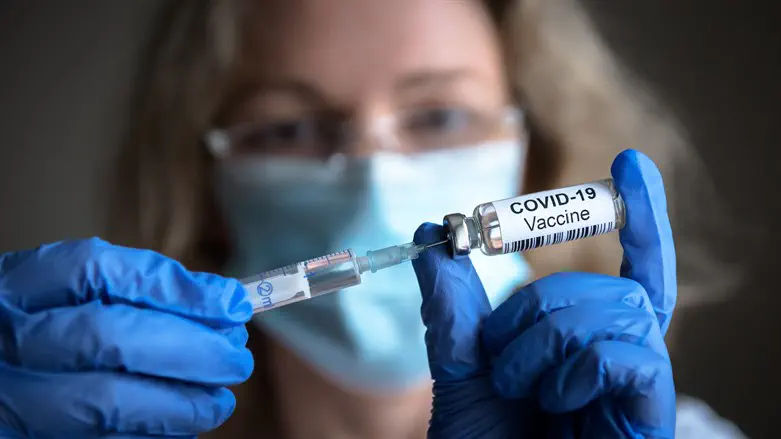
A rare side-effect of the mRNA SARS-CoV-2 vaccines may be more common than previously believed, according to a new study conducted in Oregon, with additional research suggesting the risk for the side-effect increases dramatically among males under 40 with each additional dose of the vaccine.
The first study, conducted by doctors in Portland from the Kaiser Permanente healthcare provider network, examined incidents of two kinds of heart inflammation - myocarditis and pericarditis -from the Kaiser Permanente database.
Both the Moderna and Pfizer-BioNTech mRNA vaccines have been linked in a number of cases to heart inflammation, particularly in younger male recipients of the vaccine.
Led by head researcher Katie Sharff, the team found a number of cases which would likely have not been included in Centers for Disease Control (CDC) estimate for the prevalence of myocarditis and pericarditis among vaccine recipients.
Beyond the VAERS (Vaccine Adverse Event Reporting System) and the International Classification of Diseases (ICD-10) coding of reported cases of myocarditis or pericarditis immediately after vaccination, the researchers also searched through the digital case database to find text descriptions which indicated one of the two heart inflammation conditions, even if the condition was not coded as such.
In addition, the team found that a number of cases of myocarditis and pericarditis were left out of initial estimates when the vaccine recipient who suffered heart inflammation after receiving the jab was taken to an out-of-network medical centers not connected to the Kaiser Permanente chain. The researchers found that in many cases, there was a significant delay in billing Kaiser Permanente for treatment of heart inflammation cases in individuals who had received the vaccine. Due to the delay, however, and the fact that the condition was identified out of network, the cases of myocarditis and pericarditis were not counted in estimates of the total number of cases.
By expanding the scope of cases included in its estimate, the study found the prevalence of heart inflammation to be greater than previous studies, including estimates by the CDC.
While the conditions were exceedingly rare in the general population, the rates recorded by the Portland study were significantly higher than the CDC’s estimate based on the VAERS data.
According to the CDC estimate, the highest-risk groups, males ages 12-15, males ages 16-17, and males ages 18-24, had reporting rates after the second dose of 39.9 per million, 69.1 per million, and 36.8 per million respectively; or the equivalent to 1 case per 25,040 for the 12-15 age cohort, 1 case per 14,471 in the 16-17 group, and 1 case per 27,174 in the 18-24 cohort. Females and males over 30 had significantly lower risk levels.
The Portland study, however, estimates the rates of heart inflammation after mRNA vaccination at 537.1 per million for males 18-24 after the second dose, followed by 377.4 per million for males 12-17. That would be equivalent to a risk factor of 1 out of 1,862 for males 18-24, and 1 out of 2,650 for boys ages 12 to 17.
Among all patients ages 12 to 39, male and female, who received two doses, the estimated risk level is 95.4 per million, or 1 case of heart inflammation per 10,482 vaccinations. Among males of the same age range (12-39) the risk factor was roughly double, with 195.4 cases per million, or one case for every 5,117 vaccinations.
The new study is more in line with reports from Israel, though it still exceeds the estimated rates of heart inflammation found by Israeli researchers.
A review in early December 2021 estimated the risk factor among males 16-19 at 15.07 per 100,000, or one case per 6,636 people, roughly a third of the prevalence estimated by the Portland study.
One limitation of direct comparison between the Portland study, however, and data from Israel is the mixed use of mRNA vaccines from both Moderna and Pfizer-BioNTech in the Kaiser Permanente sample, while Israel has exclusively relied on the Pfizer vaccine. Some recent research has suggested that the Moderna vaccine, which includes a significantly higher dose of mRNA than the Pfizer-BioNTech vaccine, is more likely to result in myocarditis or pericarditis.
A second study, conducted in the UK, found that while the risk of myocarditis after vaccination was generally mild in comparison to the risk faced by people infected with SARS-CoV-2, people under 40, and particularly males under 40, were significantly more likely to suffer heart inflammation following vaccination.
The study analyzed 42,200,614 cases in the UK, including 10,978,507 individuals who received a third dose of the COVID, and compared rates of incidence of myocarditis in people infected with SARS-CoV-2 to rates of the heart condition among recent vaccine recipients.
Researchers separated the cases by vaccine type, tracking myocarditis cases following jabs of the AstraZeneca, Pfizer-BioNTech, and the Moderna vaccines.
Notably, the risk factor for myocarditis among vaccine recipients remained comparable to or lower than the risk factor for COVID patients in the same age/gender cohort, with cases separated into four groups: men over 40, women over 40, males under 40, and females under 40.
Younger vaccine recipients, however were significantly more likely to be diagnosed with myocarditis following the jab than older people; even with the separation point of 40 years of age; without the more narrowly defined age cohorts used in other studies which showed peak vulnerability in the 12-25 age group.
Importantly, the study found that not only were males under 40 at far higher risk for myocarditis from any of the vaccines than from COVID infection, multiple doses of all the vaccines appears to cause a cumulative effect in increasing risk for the heart inflammation condition.
Males under 40 were least likely to suffer myocarditis after COVID infection, with a incidence rate ratio of 2.02 (just over twice the baseline risk), followed by 2.57 for the AstraZeneca vaccine (two-dose protocol), 3.41 for the Pfizer jab (two-dose protocol), and a whopping 16.52 for the Moderna vaccine (two-dose protocol), representing a sixteen-and-a-half-times increase in the risk of myocarditis compared to baseline.
Risk of myocarditis accumulated with each shot, including for the third dose or booster shot of the Pfizer vaccine. Other vaccines have not been assessed for third-shot protocols.
In each case, the second dose dramatically increased the risk factor over the first dose, and Pfizer’s booster shot dramatically increase the risk factor over the second dose, more than doubling it.
While the incident rate ratio from one dose of the Pfizer vaccine was 1.66, that figure rose to 3.41 for the second dose, and rose again to 7.6 for the booster.
Older men studied did not show the same consistent rise in risk factor with dose between the first and second doses, but did show a dramatic increase in risk between the second dose and the booster shot, which more than tripled the incident rate ratio.
Women were only moderately more likely to experience myocarditis after the booster shot, though females under 40 were shown to have a dramatic increase in risk with each dose of the Moderna vaccine, though not the Pfizer vaccine, rising to 7.55 times baseline after the second dose, well above the risk level for COVID patients.

